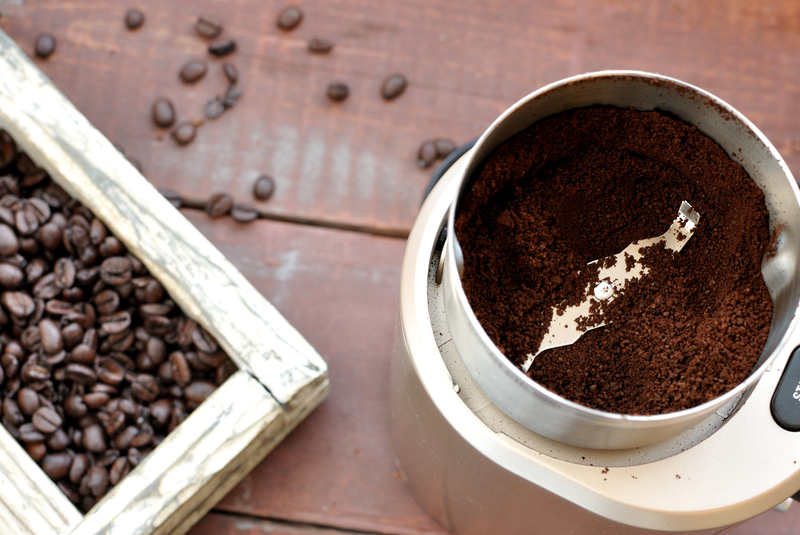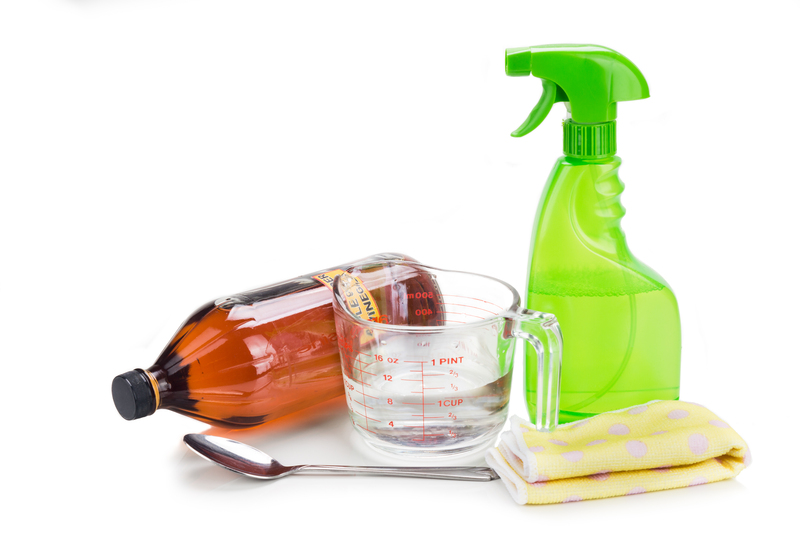Maintain the Elegance of Velvet Curtains with Safe Washing Practices
Posted on 22/09/2025
Maintain the Elegance of Velvet Curtains with Safe Washing Practices
Velvet, with its sumptuous texture and luxurious appearance, has adorned homes for centuries, making velvet curtains an ever-popular choice for those seeking sophistication and elegance in interior design. These exquisite drapes serve not only as functional window coverings but also as statement pieces that enhance the beauty and ambiance of any room. However, to maintain the elegance of velvet curtains, it's crucial to follow safe washing practices that protect their rich color, soft pile, and overall integrity.
Understanding the Nature of Velvet Fabric
Before diving into cleaning methods, it's essential to appreciate what makes velvet unique. Velvet is a woven tufted fabric, characterized by a dense pile of evenly cut fibers that provide a soft, sleek texture. Traditionally made from silk, most modern velvets use cotton, polyester, or synthetic blends, contributing to varying degrees of delicacy.
- Silk velvet: Luxurious and delicate, requiring extra care
- Cotton velvet: Durable yet susceptible to wrinkling and crushing
- Polyester or synthetic velvet: More robust, often easier to clean
Recognizing the type of velvet curtain you have is the first step toward optimal cleaning and preservation. Always look for tags or manufacturer's instructions as a starting point.

Why Proper Cleaning Is Essential for Velvet Curtains
Velvet naturally attracts dust, pet hair, and airborne particles, especially when used as window coverings. Over time, neglecting your velvet drapes can lead to:
- Faded colors and loss of sheen
- Permanent stains and discoloration
- Accumulation of allergens
- Unpleasant odors
Regular and safe washing practices not only maintain the fabric's appearance but also extend the lifespan of your velvet curtains, preserving their elegance for years to come.
Pre-Cleaning Velvet Curtains: Inspection and Preparation
Preparation is a pivotal aspect of velvet curtain maintenance. Follow this checklist to properly prep your drapery for cleaning:
- Check Manufacturer Instructions: Read the care label for any specific recommendations.
- Test for Colorfastness: Dampen a white cloth with cold water and dab a hidden area. If color transfers, professional cleaning may be required.
- Remove Loose Dust: Use a handheld vacuum with a brush attachment or a soft bristle brush to gently remove surface dirt.
- Inspect for Stains: Identify spots that may need extra attention.
- Remove Hardware: Take off hooks, rings, and other attachments to prevent damage.
Proper preparation minimizes risks and ensures successful cleaning.
Safe Washing Methods for Velvet Curtains
1. Dry Cleaning: The Safest Choice for Most Velvet Drapes
When in doubt, professional dry cleaning is the top recommendation for most types of velvet, especially those made from silk or featuring elaborate embellishments. The solvents used in dry cleaning effectively remove stains and odors without saturating the pile, thereby preserving the fabric's luster and texture.
- Pros: Minimal risk of shrinkage or pile damage
- Cons: Higher cost and logistical effort
Always opt for dry cleaning if the label recommends it or you are uncertain about the fabric type.
2. Hand Washing: Gentle Care for Washable Velvet
Some machine-washable velvet curtains, especially those made from polyester blends, may be hand washable. Here's how to safely hand wash velvet curtains at home:
- Fill a Tub: Use cold or lukewarm water and add a mild, delicate fabric detergent.
- Submerge Curtains: Immerse one panel at a time, gently swishing to loosen dirt. Avoid rubbing or scrubbing the pile.
- Soak and Rinse: After a gentle soak, rinse thoroughly with cool water to remove all traces of detergent.
- Press Out Water: Press (do not wring) excess water out by laying the panel on a clean towel and rolling it up.
- Dry Flat: Lay the curtain flat on a clean, dry towel and reshape. Avoid hanging until partially dry; heavy wet velvet can stretch out of shape.
Hand washing is best when cleaning light stains and mild dirt on modern, washable velvet. Silk velvet should never be hand washed.
3. Machine Washing: Proceed with Caution
Certain synthetic velvet curtains may be machine washable, but proceed with caution:
- Use a delicate or gentle cycle
- Always use cold water to prevent shrinkage and pile damage
- Wash curtains separately to avoid friction
- Use mild detergent formulated for delicate fabrics
Never use bleach, fabric softeners, or harsh chemicals on velvet, as they can damage the fibers and ruin the finish.
4. Spot Cleaning Velvet Curtains
For small stains or marks, spot cleaning can help maintain your velvet curtains' elegance between full washes:
- Blot, Don't Rub: Gently blot fresh stains with a dry, clean cloth to absorb liquid.
- Use Diluted Detergent: Mix a few drops of mild detergent with cold water, dip a clean white cloth into the solution, and dab the stain.
- Rinse the Area: Wipe away soap residue with another damp (water only) cloth.
- Air Dry: Allow the area to air dry completely; use a hairdryer on a cool setting for quicker results.
Spot cleaning is particularly effective for removing food or drink stains, pet accidents, or minor marks. But always test your cleaning solution on a hidden patch first.
How to Dry Velvet Curtains Properly
The way you dry your velvet curtains greatly impacts their final look and texture. Improper drying can lead to crushed pile, deformation, or color fading. Follow these best practices for drying velvet drapes:
- Avoid wringing or twisting wet velvet--this can permanently crush the pile.
- Lay flat on towels in a well-ventilated area and reshape as needed.
- If possible, partially hang the curtains to finish drying--ensure the rod is wide and clean to prevent creasing.
- Keep velvet curtains away from direct sunlight while drying, as it may cause fading.
- Never use a tumble dryer, which can overheat and damage the fabric.
Once dry, gently brush the nap (pile) upward with a soft-bristled brush to restore its signature plush look.
Ironing and Steaming Velvet Curtains
Velvet is prone to creasing, especially after washing. However, standard ironing can flatten or crush the pile, leaving shiny marks. To maintain their elegant appearance, follow these guidelines:
- Steaming is safer than ironing: Suspend the curtain and use a handheld steamer, keeping it a few inches away from the fabric. Allow the gentle steam to relax wrinkles.
- If you must iron, always do so on the reverse side, set the iron to a low-heat, no-steam setting, and place a thick cotton cloth or velvet board between the iron and the fabric.
After steaming or ironing, use a soft brush to lift the nap, reviving the curtain's unique texture and glow.
Routine Maintenance Tips to Keep Velvet Curtains Elegant
Regular, gentle care is important to maintain the elegance of velvet curtains. Here's how to keep them pristine between washes:
- Weekly vacuuming using a soft-brush attachment removes dust, pet hair, and debris.
- Rotate your curtains every few months to distribute sun exposure evenly and prevent uneven fading.
- Shake curtains gently outdoors to release accumulated dust and revive the pile's loft.
- Address spills and stains promptly--the longer a spot sits, the harder it is to remove without damage.
- Brush velvet regularly with a soft velvet brush or clothes brush to keep the nap upright and looking rich.
With these habits, your velvet drapes will remain a stunning focal point in your home for many years.
Additional Tips for Protecting Velvet Drapery
Beyond cleaning, there are several steps you can take to safeguard your luxury velvet curtains:
- Use curtain linings to protect from direct sunlight and environmental pollutants, reducing fading and fiber weakening.
- Avoid hanging velvet curtains in high-humidity areas, such as bathrooms or kitchens, where mold and mildew can take hold.
- Store velvet curtains properly when not in use--roll instead of fold to prevent creases, and store in a breathable fabric bag.
- If pet hair is an issue, use a lint roller or rubber glove with light strokes to lift fur from the pile without pulling fibers.
Common Mistakes to Avoid When Washing Velvet Curtains
If you want to preserve the elegance of velvet curtains with safe cleaning methods, steer clear of these pitfalls:
- Using hot water or harsh detergents
- Overloading the washing machine
- Wringing, twisting, or excessive rubbing of the fabric
- Hanging heavy, wet velvet panels, which may stretch out of shape
- Ironing directly on the velvet side
- Ignoring colorfastness tests
Even robust synthetic velvet can lose its appeal with improper handling, so always err on the side of caution.

Frequently Asked Questions (FAQs) About Velvet Curtain Care
Can I wash all velvet curtains at home?
No. Only machine-washable or labeled "safe to wash" synthetic velvets should be washed at home. For silk or cotton velvet, or where the manufacturer's instructions specify, dry cleaning is recommended.
How often should I clean velvet drapes?
For everyday dust and dirt, vacuum weekly. Full cleaning should be performed every 6-12 months, or more frequently in homes with pets, smokers, or those living in dusty environments.
What should I do if my velvet curtains lose their shine?
Brushing the nap and steaming lightly often restores the shine. If the luster doesn't return, consult a professional for advanced cleaning or restoration techniques.
Are there any household products I should avoid?
Avoid all bleach, abrasive cleaners, and fabric softeners. These can permanently alter the texture and color of velvet.
What about antique or heirloom velvet curtains?
These should always be handled by professionals specializing in textile restoration to avoid irreparable damage.
Conclusion: Timeless Elegance Through Proper Care
Velvet curtains offer unmatched beauty that can transform any space, but their elegance endures only with the right care. From dry cleaning precious silk drapes to gentle hand-washing and routine maintenance, your commitment to best practices ensures the rich color, plush feel, and dramatic flair of your velvet window treatments last for generations.
By following safe washing practices and protecting your curtains from common hazards, you not only maintain the elegance of velvet curtains but also create a home environment that continually impresses guests and brings you joy. With these expert tips, your velvet drapes will remain a cherished feature--sophisticated, soft, and stunning for years to come.
For more advice and product recommendations on curtain care and home textiles, explore our latest guides!
```



